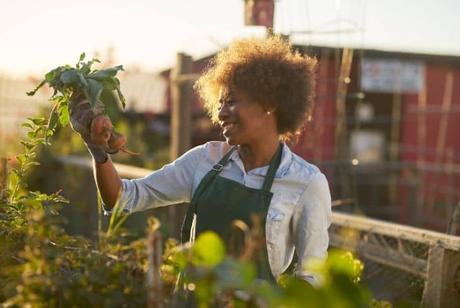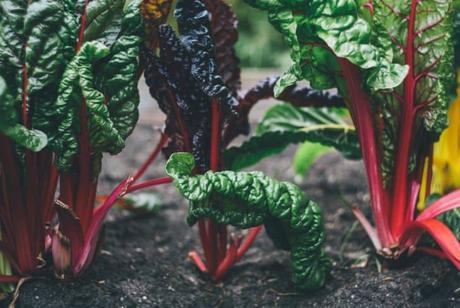What is Urban Gardening?
Urban gardening is where people practice cultivation, mainly of food, in and around urban areas. Basically, it is the traditional cultivation of crops, but in urban centers.
With urbanization and since more and more people would like to do their farming where they are, urban gardening is considerably being taken up and has been a successful alternative – a shift from the traditional thinking that the cultivation of crops can only be done in the rural areas.

As per Wikipedia,
“Urban agriculture, urban farming, or urban gardening is the practice of cultivating, processing, and distributing food in or around urban areas. Urban agriculture can also involve animal husbandry, aquaculture, agroforestry, urban beekeeping, and horticulture. These activities occur in peri-urban areas as well, and peri-urban agriculture may have different characteristics.”
The growth of plants in urban areas comes in many forms and is influenced by various factors such as land space, topography, capital requirements, and the type of plants. Urban gardening can, therefore, be done differently and includes aspects such as community gardens, urban farms, and aquaponics or hydroponics programs.
It is mainly characterized by the cultivation of crops such as fruits, vegetables, and the rearing of chicken and fish in the urban and peri-urban centers. It can be done in front and backyards, balconies, sunrooms, indoor greenhouses, rooftops, or patios.
Things such as containers, old tires, barrels, unused buckets, shoes, watering cans, window-boxes or kiddie pools can be used to grow food crops, fruits plants, or flowers.
Urban gardening is hence a venture that helps the urban communities in social and economic ways by stimulating the local economy and also serves as an effective means of securing a family’s food security.
All these aspects make urban gardening a very interesting topic, and for this reason, here you can learn the importance of urban gardening as well as amazing tips and ideas for sustainable Urban Garden.
Importance of Urban Gardening
1. It puts school lessons into practice and can boost children’s interest in agriculture
Urban agriculture gives students an opportunity to try things out at home and more so, put their class lessons into practice. Through urban gardening, they easily connect their lessons to real-world gardening and how it is done, thereby increasing their stock of knowledge about cultivating plants.
Furthermore, school-goers who are still young can find interest in agriculture and even later pursue a course such as a degree in Agriculture when they experience cultivation through urban gardening.
2. It can boost food security
Urban gardening increases the land area utilized for agriculture, thereby increasing food security as the world population soar and arable land constantly facing depletion.
With urban gardening involving simple food crops such as vegetables and fruits, it can help reduce the dependence of vegetable and fruit produce from farms or imported from other countries, thus increasing available food for families and urban dwellers.
It also gives urban dwellers access to readily available foods that are rich in nutrients, supplementing other food products. As a result, it can serve as a solution to food insecurity for the future amidst the mounting concerns of how the billions of people on the planet will be fed.
3. Urban gardening is of economic importance and creates jobs
Urban gardening can make a city’s economic base expand by creating economic activities through the production, packaging, and selling opportunities for food, vegetable, herbs, and fruit products.
As a result, jobs are created, the cost of food goes down, and people consume more quality foods. A healthy community also translates to vibrant and hardworking people who can work towards building the economy.
At the same time, considerably big urban gardens may require the services of gardening experts thus creating new jobs.
4. It is of social importance and creates environmental awareness
Urban gardening allows individuals to socially interact, contributing to society’s social and emotional wellbeing. It creates a sense of community participation for not only the community but also individuals and families, making community events more possible and easier to work on.
Also since it involves matters of the environment, it bolsters environmental awareness through aspects such as protecting soil fertility, ensuring air and water quality, protecting urban ecological biodiversity, rainwater harvesting, water recycling, organic waste recycling, and green-neighborhood spaces.
5. Urban gardening improves the overall human body wellbeing
The ability to grow and produce one’s own food or for the family has been identified to improve a person’s mental and emotional state as well as self-efficacy because gardening calms and refreshes the mind.
The process of digging, mowing, raking, and tending to plants is also said to provide maximum body movement and the stretching of almost all the body muscles.
According to experts, gardening exercises burn calories fast (digging and shovelling: up to 250 calories, weeding: 105 calories, mowing: 195 calories, raking: 100 calories). Researchers have equally associated gardening with overall reduced risks of obesity, diabetes, and coronary heart disease.
6. It ensures healthy living
Urban gardening guarantees the consumption of healthy foods that are predominantly organic, “home-grown,” and free of artificial fertilizers, pesticides, and herbicides. In other words, it gives you and your family control of the nutrients you get from your food.
Aside from healthy foods, urban gardening has an element known as “horticulture therapy,” which is reported to enhance plant-human relationships that considerably reduces stress, blood pressure, anger and fear, and muscle tension by inducing relaxation.
7. It benefits the environment
Urban gardening reduces carbon footprints by reducing carbon emissions during the transportation of food, vegetables, and fruits from other regions or countries.
It also relieves the farms where agriculture was traditionally practiced, freeing the land for natural regeneration.
Besides, urban gardening does not contaminate as much soil as in the traditional agricultural setting, through fertilizers, hazardous chemicals, and other wastes.
What is more, it provides wholesome environmental regeneration by improving air and water quality, protecting urban ecological biodiversity, and promoting water and organic waste recycling.

Amazing Tips and Ideas for Sustainable Urban Gardening
1. Pick your plants correctly
Urban gardening can incorporate tens of plants. However, based on your setting, you have to choose the crop to plant correctly. Herbs and leafy greens are ideal as they are less complex as compared to fruits, peppers, and tomatoes.
2. You have to consider the sun
If your garden is in a bit of a dark place, most crops will not do well. Exposure to sunlight is vital for the survival of a plant and without such light, most crops won’t do well.
3. Consider your space
Urban gardening can incorporate the growth of trees. However, if your space is limited, you, therefore, should not plant trees. Limited space will not only squeeze the crop but also yourself and your access to space
4. Overwatering kills
Most urban gardens use containers and have limited space for draining excess water. Overwatering the crops will, therefore, kill them as there will not be enough space to take the excess water.
To fix this, consider adding drainage holes to your container so that the soil does not become waterlogged and kills the plants.
5. Consider vertical gardening
Instead of filling the limited space with crops and lacking a spot to walk on, it is advisable to use the space upwards. As such, you can plant them in pots that can be hung, utilizing all the space going upwards.
6. Planting right
When planting, you have to put gravel at the bottom of the container, before adding some soil. You should also leave about an inch at the top of the container, for watering
7. Choosing your soil
The soil you use is vital to the quality of the crop harvested. Some go for soil sprayed with pesticides, but forget that it is loaded with chemicals. As such, the end result will not be purely organic.
8. Watering hours
It is not possible to pinpoint the time it is best for watering the plants as this may vary due to rainfall patterns and soil water retention capacity.
However, it is ideal to water your garden in the evening and early mornings, so that the crops use up the water for a longer period before the afternoon heat.
9. Start small
Some might get overexcited by the idea of urban gardening, then start big and fail to harvest as expected, which may kill drive and interest. As such, it is advisable to start small and work towards adding more in the future.
10. Potting soil is better
Potting soil is lighter, is sterilized to kill weeds and disease, and drains better. It is, therefore, preferred to directing planting on the soil.
11. Plastic pots are better
The choice of the container or pot is personal, but plastic containers are better than clay ones. Plants in plastic pots tend to dry out less quickly as plastic pots are not as porous as the clay ones. You need to add about 5 centimeters of mulch at the top to reduce water evaporation from the soil
12. More benefits of vertical gardening
In addition to utilizing the vertical space in a more efficient way, vertical growth of crops can serve more purposes. If a container has a wall pocket, for example, you can plant more crops with additional commitments or having to use more containers.
13. Use the surroundings as well
Using the surroundings works well with climbing plants, like tomatoes, which can climb up walls or up a pole. You can, therefore, hook the climbing plant on to that pole in your backyard and leave the rest to the plant.
14. Shelf your plants
The alternative to hanging your plants and growing them vertically, is to make shelves, where you will place the pots. It uses less space and makes the most out of small balconies, allowing for an illusion that one’s balcony is spacious.
References:
Baker, M. (2016). What is urban agriculture, and why is it important?. Farm Progress. Retrieved from https://www.farmprogress.com/marketing/what-urban-agriculture-and-why-it-important
Community food security (CFS). Health Benefits of Urban Agriculture Public Health and Food Security. Retrieved from http://foodsecurity.org/uahealthfactsheet/
Erickson, A. (n.d.). 17 Urban Gardening Tips That Are Perfect For Small Spaces. Reader’s Digest Canada. Retrieved from https://www.readersdigest.ca/home-garden/gardening/10-urban-gardening-tips/
McCoy, M. K. (2019). 5 Tips To Start An Urban Garden. Wisconsin Public Radio. Retrieved from https://www.wpr.org/5-tips-start-urban-garden


